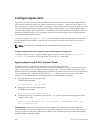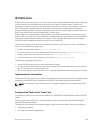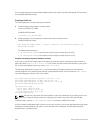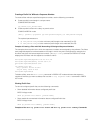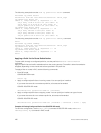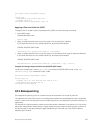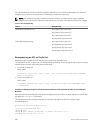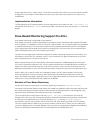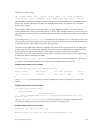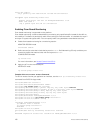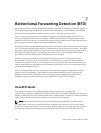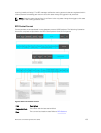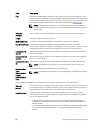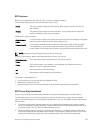Route maps also have an “implicit deny.” Unlike ACLs and prefix lists; however, where the packet or traffic
is dropped, in route maps, if a route does not match any of the route map conditions, the route is not
redistributed.
Implementation Information
The Dell Networking OS implementation of route maps allows route maps with the no match or no set
commands. When there is no match command, all traffic matches the route map and the set command
applies.
Flow-Based Monitoring Support for ACLs
Flow-based monitoring is supported on the platform.
Flow-based monitoring conserves bandwidth by monitoring only the specified traffic instead of all traffic
on the interface. It is available for Layer 2 and Layer 3 ingress traffic. You can specify traffic using standard
or extended access-lists. This mechanism copies incoming packets that matches the ACL rules applied
on the ingress port and forwards (mirrors) them to another port. The source port is the monitored port
(MD) and the destination port is the monitoring port (MG).
The port mirroring application maintains and performs all the monitoring operations on the chassis. ACL
information is sent to the ACL manager, which in turn notifies the ACL agent to add entries in the CAM
area. Duplicate entries in the ACL are not saved.
When a packet arrives at a port that is being monitored, the packet is validated against the configured
ACL rules. If the packet matches an ACL rule, the system examines the corresponding flow processor to
perform the action specified for that port. If the mirroring action is set in the flow processor entry, the
destination port details, to which the mirrored information must be sent, are sent to the destination port.
When a stack unit is reset or a stack unit undergoes a failure, the ACL agent registers with the port
mirroring application. The port mirroring utility downloads the monitoring configuration to the ACL
agent. The interface manager notifies the port mirroring application about the removal of an interface
when an ACL entry associated with that interface to is deleted.
Behavior of Flow-Based Monitoring
Activate flow-based monitoring for a monitoring session by entering the flow-based enable
command in the Monitor Session mode. When you enable this capability, traffic with particular flows that
are traversing through the ingress interfaces are examined, and appropriate ACLs can be applied in the
ingress direction. By default, flow-based monitoring is not enabled.
You must specify the monitor option with the permit, deny, or seq command for ACLs that are
assigned to the source or the monitored port (MD) to enable the evaluation and replication of traffic that
is traversing to the destination port. Enter the keyword monitor with the seq, permit, or deny
command for the ACL rules to allow or drop IPv4, IPv6, ARP, UDP, EtherType, ICMP, and TCP packets.
The ACL rule describes the traffic that you want to monitor, and the ACL in which you are creating the
rule will be applied to the monitored interface. Flow monitoring is supported for standard and extended
IPv4 ACLs, standard and extended IPv6 ACLs, and standard and extended MAC ACLs.
130
Access Control Lists (ACLs)



